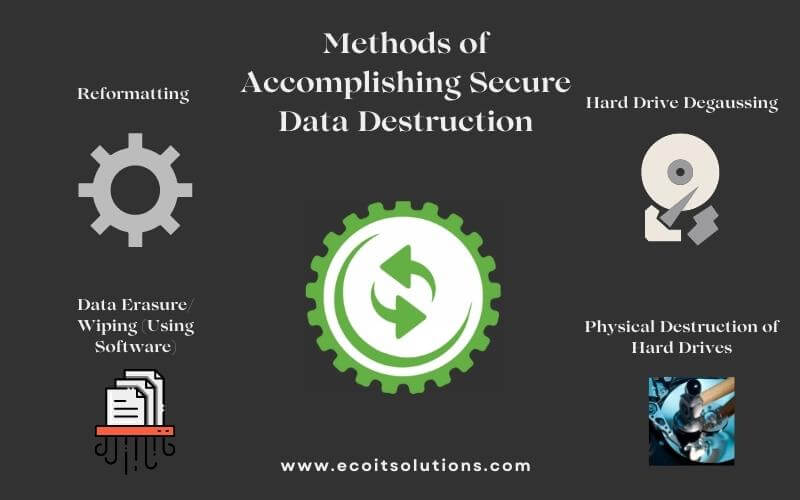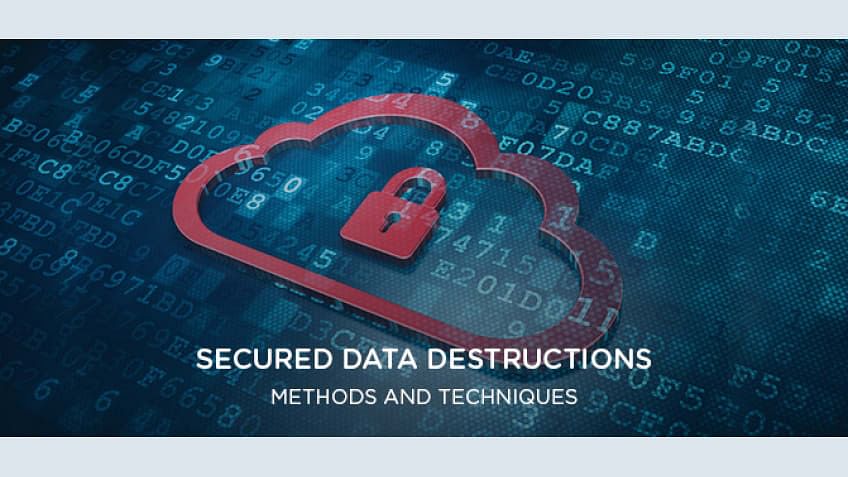Discovering the Importance of Data Destruction in the Context of Computer Security Providers and Protecting Confidential Information
In a period where information violations are significantly usual, the significance of reliable information destruction can not be overstated. Organizations must adopt stringent measures to make certain that delicate info is not only safeguarded during its lifecycle but also emphatically gotten rid of when no more required. The techniques employed for information removal, coupled with conformity to legal criteria, play an essential role in maintaining confidentiality and trust fund. Nevertheless, the implications of these techniques prolong past simple conformity, influencing a company's online reputation and operational honesty in the digital industry. What approaches can organizations apply to enhance their information destruction procedures?
Comprehending Information Destruction
Data devastation is an important element of computer safety that includes the irreversible elimination of data from storage tools to stop unauthorized gain access to and potential information breaches. In a significantly digital landscape, companies encounter heightened risks connected with delicate details being poorly accessed or exploited. Effective data damage safeguards versus these hazards, ensuring that confidential dataâEUR" such as customer details, copyright, and monetary recordsâEUR" can not be recouped after disposal.
Recognizing the relevance of information devastation expands past plain conformity with lawful and regulative frameworks; it is necessary for preserving business stability and count on. When data is improperly managed or improperly damaged, the effects can be extreme, including financial loss, reputational damage, and lawful responsibilities.

Techniques of Information Removal

One common approach is data wiping, which includes overwriting existing data with arbitrary patterns numerous times. This strategy provides the initial information irretrievable, making it a preferred option for organizations seeking to safeguard private info.
An additional approach is degaussing, which makes use of an effective electromagnetic field to interfere with the magnetic domain names on storage space gadgets, successfully eliminating the information. This technique is especially efficient for magnetic media however is not suitable to solid-state drives.
Physical damage is one more robust method, squashing or entailing the shredding of storage space gadgets. This technique guarantees that data recuperation is basically difficult, making it excellent for very sensitive info.
Lastly, security can work as a corresponding method to data obliteration. By securing data before removal, organizations can add an added layer of protection, making sure that even if residues are recouped, they stay inaccessible without the decryption trick. Each approach must be picked based upon the level of information level of sensitivity and the certain safety demands of the organization.
Legal Compliance and Information Safety And Security
Organizations have to navigate a complicated landscape of legal needs connected to information security, particularly after executing techniques of data eradication. Numerous policies, such as the General Information Security Law (GDPR) and the Medical Insurance Mobility and Accountability Act (HIPAA), enforce stringent standards on just how organizations have to deal with and get rid of of delicate data. Failure to abide with these policies can bring about considerable legal consequences, consisting of considerable fines and reputational damage.
Information damage processes have to be diligently documented to demonstrate compliance with suitable regulations and standards. This paperwork not just works as evidence of adherence to legal obligations however additionally highlights a dedication to safeguarding sensitive info. Organizations must also establish clear policies pertaining to information retention and destruction timelines, guaranteeing that information is not held longer than essential.

Additionally, normal audits and analyses of site link information damage methods are necessary to keep conformity and adapt to developing legal frameworks (data destruction). By proactively resolving lawful demands, organizations can reduce risks related to information violations and check here show their commitment to data safety. Inevitably, prioritizing lawful conformity in data damage procedures is not just a regulative commitment, yet a fundamental element of a robust information safety strategy
Influence On Service Credibility
The credibility of a business can be substantially impacted by its approach to information damage and management. In today's digital landscape, where data violations can happen anytime, the failure to correctly dispose of sensitive details can result in extreme consequences. Organizations that improperly handle information damage threat exposing personal customer info, which not just breaches personal privacy laws yet also wears down trust among stakeholders and clients.
A damaged reputation can lead to lowered customer loyalty, as customers come to be hesitant to engage with an organization that has demonstrated neglect in protecting their data. In addition, negative promotion bordering an information breach can have a long lasting result, as potential clients may be hindered by the perceived lack of protection. This can result in a straight decline in earnings and market share.
Moreover, companies that prioritize data destruction as part of their safety and security technique can improve their track record by showcasing their dedication to securing delicate info. By embracing strict data administration methods, organizations can not only mitigate threats yet additionally place themselves as credible entities in their particular industries, thus strengthening their total brand name photo.

Ideal Practices for Secure Disposal
Carrying out best techniques for secure disposal of information is essential for reducing threats associated with data violations and making certain compliance with privacy laws. Organizations needs to embrace a comprehensive information disposal policy that lays out procedures for both physical and digital data damage.
For physical data storage space devices, such as difficult drives, shredding or degaussing is recommended to stop information recovery. In addition, companies must maintain a chain of custody paperwork during the disposal process, making certain responsibility and traceability of disposed things.
For digital information, making use of software application that sticks to industry requirements for information wiping is vital. This software must overwrite existing information multiple times, making healing their explanation virtually impossible. It is likewise vital to verify the efficiency of the information destruction process with audits or third-party analyses.
Training employees on safe disposal techniques adds another layer of safety, as human mistake can often result in information direct exposure. Regularly upgrading and assessing disposal plans ensures alignment with developing guidelines and technical innovations. By implementing these best methods, organizations can substantially lower the threat of unapproved information accessibility and boost their total information defense approach.
Verdict
To conclude, information damage is an essential element of computer safety and security services that ensures the protection of secret information from unapproved accessibility. Carrying out efficient techniques of data eradication, sticking to lawful compliance, and acknowledging the effect on business reputation are crucial parts of a detailed data security strategy. By taking on finest practices for secure disposal, companies can promote trust with customers and secure sensitive information, ultimately contributing to a much more protected electronic landscape.
In an era where information violations are increasingly typical, the relevance of reliable data devastation can not be overemphasized.Data destruction is a critical element of computer security that includes the permanent removal of data from storage space devices to protect against unauthorized accessibility and potential data breaches. Organizations should likewise develop clear policies pertaining to data retention and devastation timelines, guaranteeing that information is not held longer than necessary.
By proactively attending to lawful demands, companies can mitigate dangers linked with data violations and show their commitment to data protection (data destruction). Ultimately, focusing on lawful compliance in information devastation processes is not just a governing obligation, however a basic facet of a robust data protection strategy